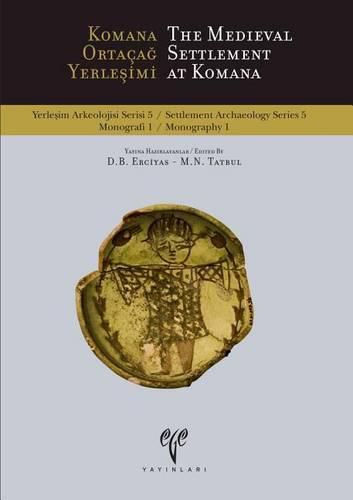Readings Newsletter
Become a Readings Member to make your shopping experience even easier.
Sign in or sign up for free!
You’re not far away from qualifying for FREE standard shipping within Australia
You’ve qualified for FREE standard shipping within Australia
The cart is loading…






At Komana where life existed at the presence of three different political authorities between 11th and 17th centuries, information regarding architecture, production, living conditions, natural environment, agriculture and animal husbandry, trade and religion have been compiled. This book aims at presenting a preliminary evaluation of all this data. The main purpose of this book is to present the preliminary result of especially 5 years of excavations. However, in addition to this main purpose the book has another significant mission; the medieval period in Anatolia and especially transition from the Byzantine rule to the Seljukids have been insufficiently studied. The excavation data revealed at Komana promises to provide important information on the economic dynamism in and the international character of provincial towns, and diversity in settlement types during the Middle Byzantine period. Therefore, this book’s mission is to show the amount of information that could be produced if and when medieval remains are included in the archaeological studies conducted at sites in Anatolia. In the coming years, the mission of the project will be to study the settlement patterns during the transitional period between the Byzantines and the Danishmendids, the reflections of political and economic crisis on archaeological data, to identify the changes initiated by the transition in Anatolia from Christianity to Islam and to identify the actors in these changes.
$9.00 standard shipping within Australia
FREE standard shipping within Australia for orders over $100.00
Express & International shipping calculated at checkout
At Komana where life existed at the presence of three different political authorities between 11th and 17th centuries, information regarding architecture, production, living conditions, natural environment, agriculture and animal husbandry, trade and religion have been compiled. This book aims at presenting a preliminary evaluation of all this data. The main purpose of this book is to present the preliminary result of especially 5 years of excavations. However, in addition to this main purpose the book has another significant mission; the medieval period in Anatolia and especially transition from the Byzantine rule to the Seljukids have been insufficiently studied. The excavation data revealed at Komana promises to provide important information on the economic dynamism in and the international character of provincial towns, and diversity in settlement types during the Middle Byzantine period. Therefore, this book’s mission is to show the amount of information that could be produced if and when medieval remains are included in the archaeological studies conducted at sites in Anatolia. In the coming years, the mission of the project will be to study the settlement patterns during the transitional period between the Byzantines and the Danishmendids, the reflections of political and economic crisis on archaeological data, to identify the changes initiated by the transition in Anatolia from Christianity to Islam and to identify the actors in these changes.